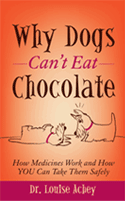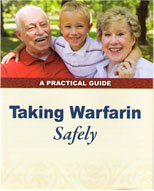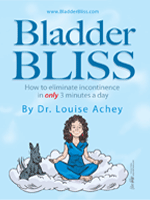Help For Itchy Eyes
Tags: Alaway®, antihistamines, cromolyn, itchy eyes, ketotifen, ketotifen eye drops, mast cell stabilizer, Opticrom®, Patanol®, pheniramine maleate, seasonal allergies, Zatidor®
Q: When my allergies kick up my eyes itch like crazy. I’ve tried Visine® eye drops but they don’t really help. Is there anything else I can try?
-Itchy Eyes in the Summertime
Some years ago I bought my “dream” car: jet-black 1985 Jeep CJ7 hardtop with low miles from its original owner and the last year Jeep made the CJ7. It was a real classic, and to celebrate, my husband Charlie and I took it cruising on a Saturday afternoon in mid-August through the gently rolling hills of central Ohio. With the top off, the smell of moist earth greeted us as we crested each hill, cornfields reaching to our collarbones alternating with lush fields of bushy soybeans. Driving my dream car for the first time made that summer evening magical. The morning after, though, was not so nice. I woke up with my nose completely stuffed up and eyes that itched like fire.
Fumbling with the toaster, I tried to put a slice of bread into the slot on the top with my eyes streaming like I’d just chopped a couple of onions. I grumbled, “My allergies haven’t been this bad in years, not since I lived next to a big patch of ragweed one summer back in Washington State. This is just crazy…we drove past fields of corn and soybeans last night, not ragweed.”
“Uh…Louise? We did drive past ragweed last night, TONS of it. What did you think was growing in the ditches?”
I squeezed my eyes shut as I wiped tears from my cheeks. “Aaaagh!”
How do you soothe the discomfort of itchy, watery eyes from allergies gone wild? The mildest treatment for itchy eyes is using a lubricating eye drop like Systane®, GenTeal® or Refresh® to sooth burning and relieve the “sand in your eyes” feeling. Although helpful in flushing pesky pollen out of your eyes they can’t shut down an allergic reaction like an antihistamine.
Decongestant eye drops shrink the blood vessels in your eyes, making them look less irritated or “bloodshot”. Like lubricant eye drops, decongestant eye drops can’t block an allergic reaction but they can reduce eyelid swelling. Overusing decongestant eye drops can cause dry eyes and aggravate certain types of glaucoma, threatening your vision. Naphazoline is the only decongestant currently available in eye drops without a prescription and is sold either by itself as Naphcon® or combined with an antihistamine as Visine-A® or Naphcon-A®. Naphazoline should not be used for more than 3 days at a time and should not be used if you have glaucoma.
Eye drops containing antihistamine will relieve itchy, watery eyes triggered by allergic reactions. Visine-A® and Naphcon-A® (the “A” stands for antihistamine) both contain the antihistamine pheniramine maleate. They also contain the decongestant naphazoline limits their use to 3 days at a time.
My favorite allergy eye drops contain ketotifen, which acts both as an antihistamine and a type of allergy medicine called a mast cell stabilizer. Mast cell stabilizers work by calming your body’s reaction to something you are allergic to, called an allergen. Your body reacts to an allergen by releasing histamine into your bloodstream, causing, and redness, swelling and itching.
Histamine is stored in special cells called mast cells. When a mast cell comes in contact with something you are allergic to, a chain reaction occurs. The mast cell opens up and the histamine stored inside rushes out, triggering an allergic reaction. Antihistamines work by blocking the swelling and itching caused by histamine but mast cell stabilizers are even more powerful because they can prevent the allergic reaction by keeping your mast cells intact and their histamine safely stored inside.
Originally marketed as the prescription drug Zatidor®, ketotifen is now available without a prescription as the brand name Alaway® and as generic ketotifen eye drops. I recommend ketotifen eye drops instead of lubricating ones or decongestants because it’s very effective yet inexpensive and safe to use in children 3 years old and older.
Two other mast cell stabilizers are available in eye drop form, but only by prescription: cromolyn (Opticrom®) and Patanol®.
When using any kind of eye drops, avoid contaminating the liquid inside the bottle by washing your hands first and being careful not to touch the tip of the dropper to your eye or to any other surfaces. You’ll only need one drop in each eye; any more than that will just run out and be wasted.



